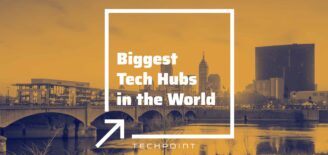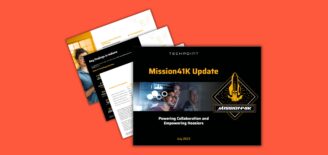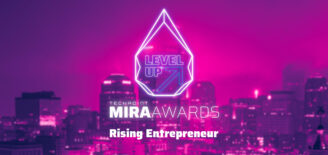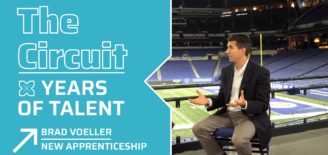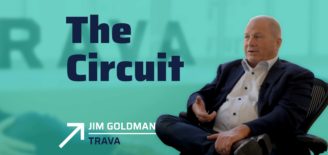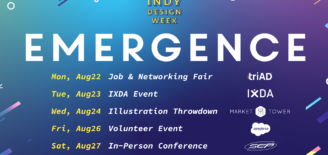The UX Economy: Why biz landscapes are upside down (and what you can do about it)
The term “UX” has been floating around the tech world for years, but it still dumbfounds many business owners. What is UX and why should I care?
A few years ago, many business owners laughed in the face of UX design. Some called it a fad. Others claimed it had no effect on the bottom line. Today, business owners who shared those opinions are living in an upside down world where the impact of design is lasting and profitable.

The fact is that we’re living in the UX Economy. The business landscape is changing and in some ways turned upside down (or rightside up if you’re a designer), making design central to business. Last week, Indianapolis played host to Midwest UX, a conference bringing the best and brightest from the UX industry together to talk about this changing landscape. For those of you who have written off UX in the past, here’s what you need to know.
UX Builds World-Class Products
20 years ago, the notion of a chief design officer would be laughed out of any board room. Today, however, a staggering number of businesses are starting with a chief design officer as one of their founding fathers. What’s led to this shift?
Businesses are fighting as hard as they can to avoid commoditization, and the early-adopters in the UX world all understand one thing: Design is one of the easiest ways to avoid commoditization. If you build an elegant product, it doesn’t matter whether you’re selling software or soft drinks, users will go out of their way to choose your brand.
In his talk, “How to Use Empathy to Design Products People Love,” Jon Kolko contradicted the conventional notion of a designer as someone who is merely stylizing a product created by someone else. While designers of past played the role of simply making something look pretty, UX designers today have a higher calling. It is their responsibility to understand the market fit of every product they ship and create a user experience that matches.

UX design has become ubiquitous in tech companies because it has to be someone’s job to, as Jon put it, “make the world less strange.” As our tech capabilities skyrocket, someone needs to be responsible for searching for the why behind innovation. UX designers hold a special place in the product development world because they get to decide whether an innovation makes sense from a user’s perspective. This alone, however, didn’t bring UX to the C-Suite. Great UX-ers knew they needed the business savvy to back it up.
UX Builds World-Class Businesses
The problem: CEO’s care more about dollars than design. The solution: Do what UX experts do so well — research.
Ten years ago, it may have been easy for executives to write off design. Today, however, it’s becoming tougher. In her talk, “The Business of UX,” Ashley Wrobel pointed out that businesses in the “DMI Design-Centric Index” have grown over 200% faster since 2006 than the S&P 500.
Not laughing at the Chief Design Officer now, are you? The pragmatic businessmen out there are likely curious. Why is design leading to such rapid growth? The answer isn’t surprising to anyone in the tech space.
Today, we live in the relationship economy. People trust reviews from friends more than they trust advertisements. Moreover, people are making personal connections with the businesses they frequent.
Companies who were early on the UX bandwagon have taken advantage of this, using design as a way to build more effective relationships with every customer.
Today, companies that haven’t already invested in UX are starting to kick themselves as they watch their competitors run laps around them. This is where UX is today, but it begs the question, where will UX be tomorrow?
UX is Much More Than a Design Tool
Today, UX is helping customers build relationships with products and brands. Tomorrow, it could be doing much more, and the only limit to this potential is your business’ ability to invest in its future.
During his talk, Peter Morville focused less on where UX is today and more on the architecture of understanding where it could go. Too many designers and developers are focusing on the design and management of information systems, not enough are focusing on understanding the intrinsic nature of information in systems. This key distinction could be the difference between companies who merely accept UX as a cost of doing business and those who embrace it for its true potential.
In Indianapolis, we’re lucky to have access to this caliber of conference. As we grow as a city, it is imperative that we are on the forefront of innovation, and UX is a staple of truly great innovation over the past decade.
For more information about UX, design, and Indy’s growing tech scene, make sure to subscribe to our newsletter and keep up with the Techpoint blog.

